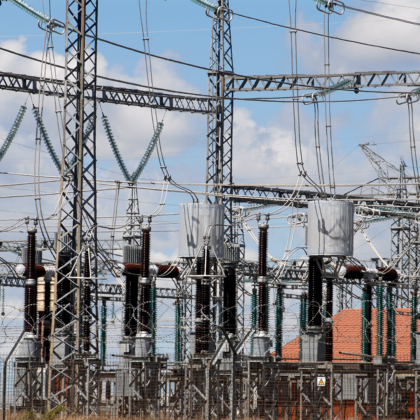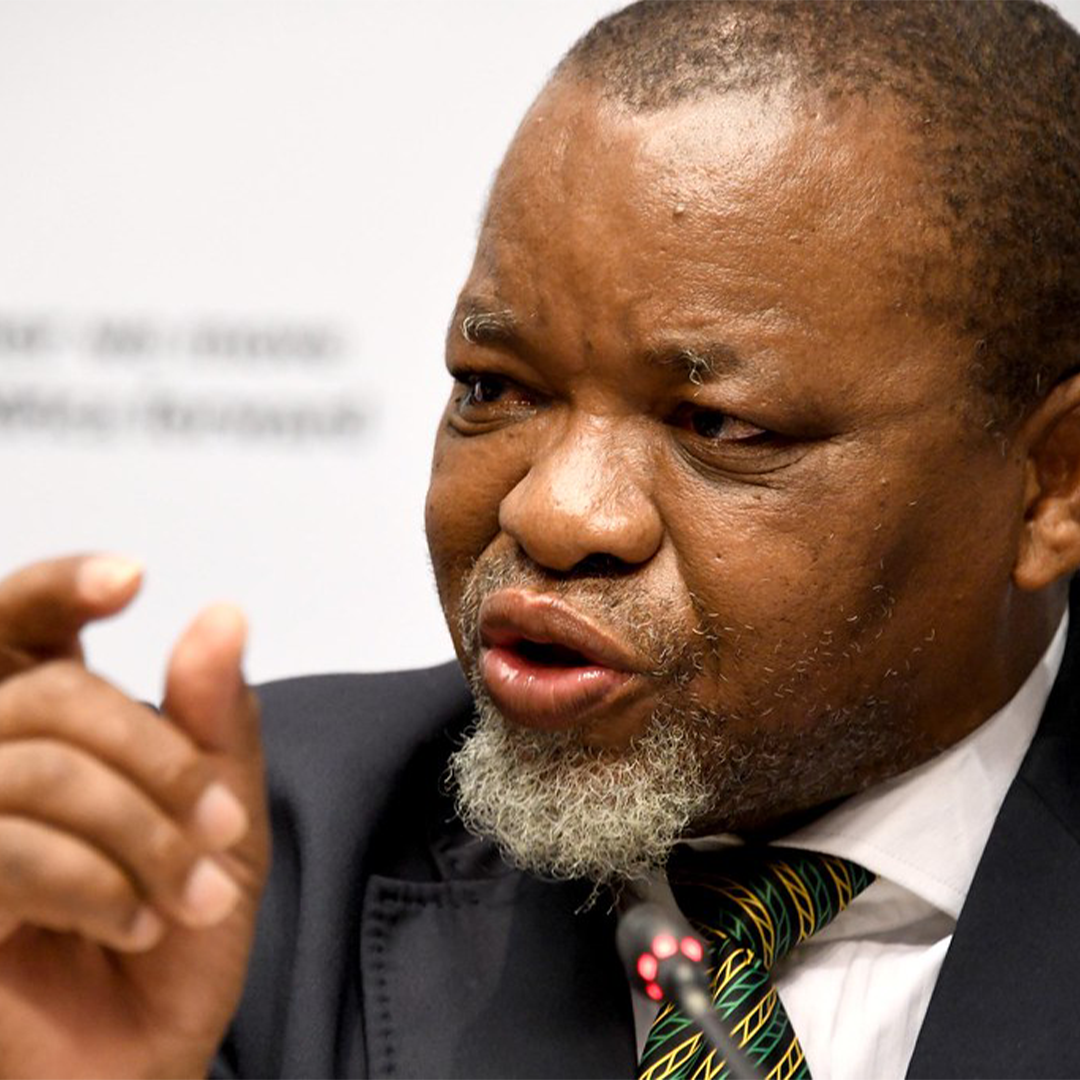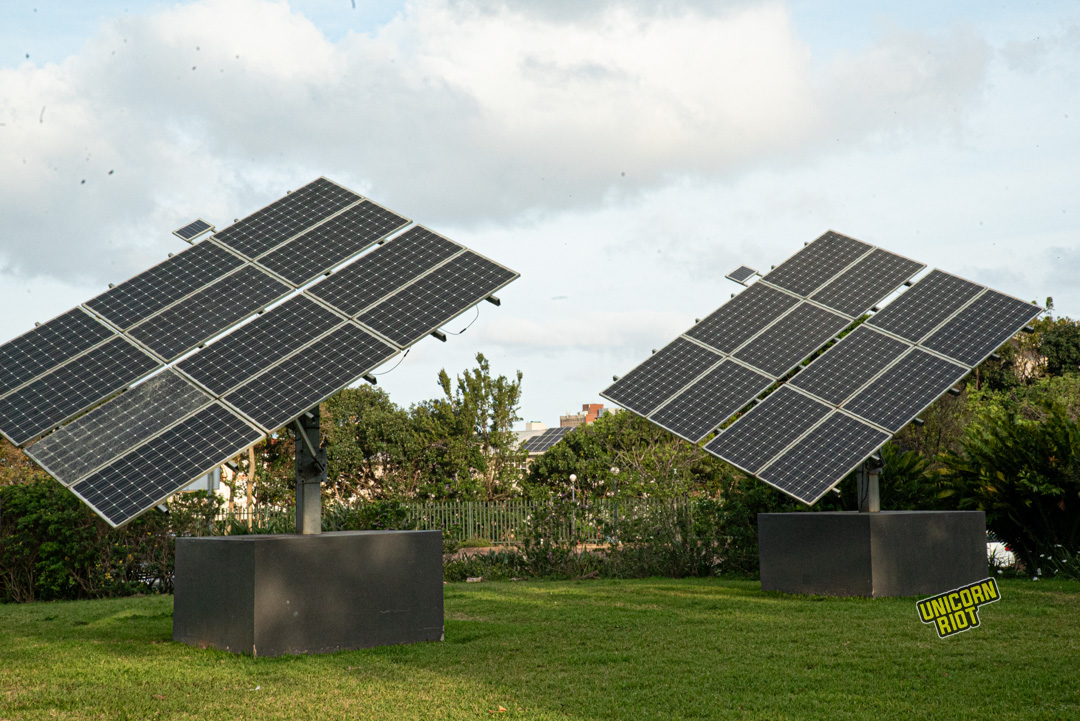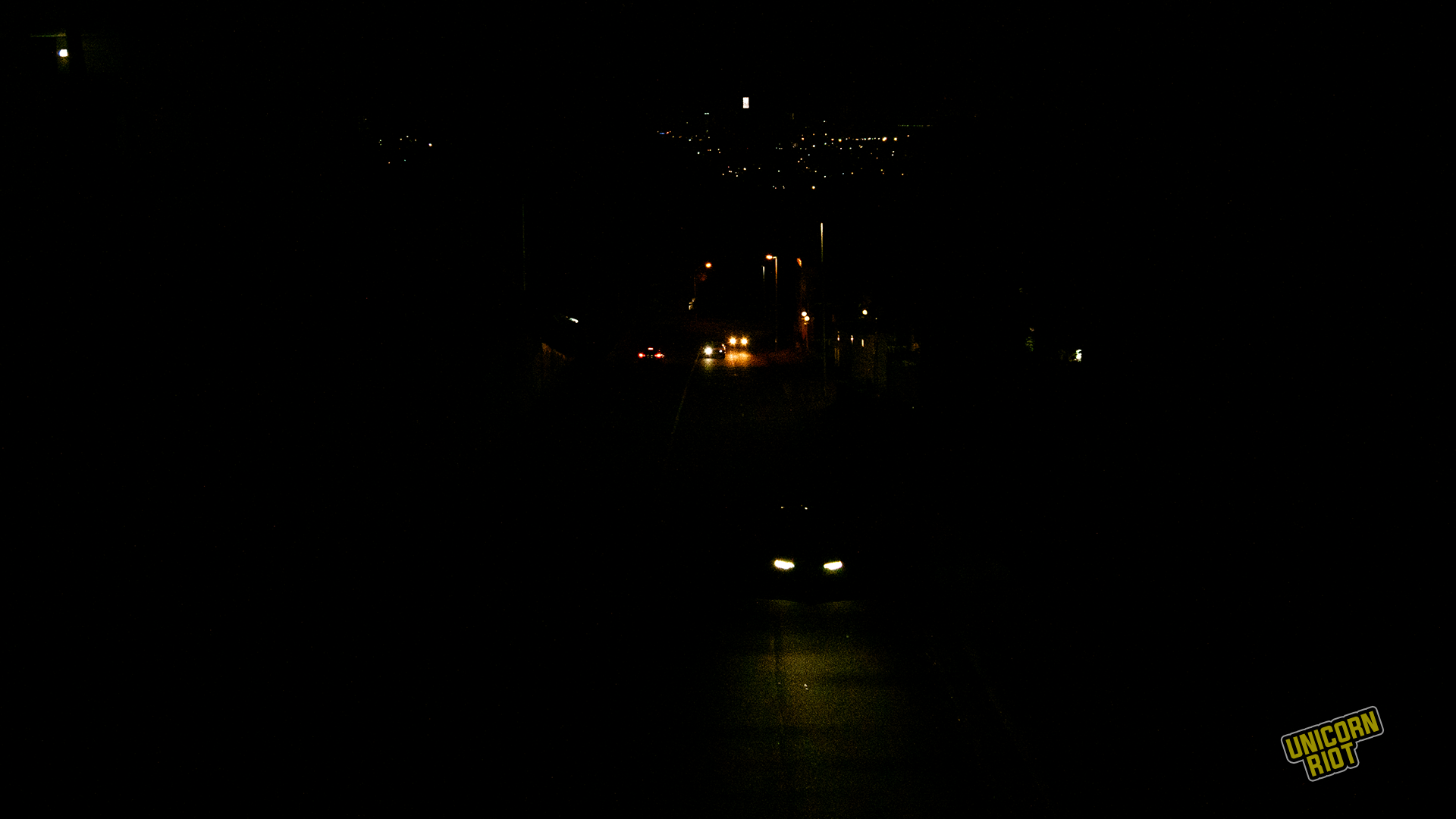South Africa’s Energy Crises Increasingly Target Poor Communities
Durban, South Africa — For nearly two decades, South Africa has been experiencing a steadily increasing number of pre-planned rolling blackouts. Known as “loadshedding” these pre-planned outages are intended to prevent the grid from completely blacking out due to the lack of sufficient generating capacity.
Since 2007, periods of load shedding have steadily increased with last year being the worst recorded year on record.
This year, however, the country has witnessed a noticeable turnaround as Eskom proudly boasts that it has suspended loadshedding for over 191 days – a feat not accomplished since 2020.
#POWERALERT1
— Eskom Hld SOC Ltd (@Eskom_SA) October 4, 2024
Loadshedding suspension continues after 191 days of uninterrupted power supply, achieving R11.51 billion in diesel savings year-on-year pic.twitter.com/M2joRwcUaY
This statement may mislead one to believe that South Africa is no longer experiencing mass power outages; on the contrary, in some communities power outages are occurring on an even more frequent and intense basis than before. The key difference is that now these power outages are generally confined only to certain communities where infrastructural stability is especially poor and in dire need of repair/expansion. Eskom refers to these more targeted electricity cuts as “load reduction.”
Load Reduction vs. Load Shedding
Load reduction differs from load shedding in that instead of implementing rolling blackouts on a national scale that affect all areas evenly, load reduction only cuts power to particular electrical transformers serving specific areas. Said transformers are typically located in densely populated areas and responsible for supplying an ever-increasing number of people with electricity. Many of these old and outdated transformers were not built to support this increased usage, which can lead to those transformers failing, or even worse. [The global supply chain for transformers is in “crisis” and very delayed, which causes worldwide electrical grid problems.]

Eskom has thus declared that cutting electricity to these areas is necessary to prevent transformers from overloading and posing a significant safety hazard. It further places blame on people who are connected to these transformers via illegal connections. The utility has at different times given different estimates for the amount of people actually stealing electricity in these areas but most recently, Eskom claims that over 65% of the people who live in areas under load reduction are connected to the grid illegally.
Eskom workers will sometimes be sent into certain areas to dismantle illegal connections; however, it usually doesn’t take very long before those connections are re-established. This can also be highly dangerous for workers who have reported being violently attacked in certain neighborhoods.
A resident from Setjwetla, Alexandra, threw a brick at Eskom officials as they removed illegally connected wires in the area. Residents have connected power illegally into their homes at a fee ranging between R200 and R250. @TeamNews24 pic.twitter.com/cZavMtfr20
— ntwaagae Seleka (@ntwaagae) June 15, 2023
Many residents that are connected to the grid legally have long expressed frustration at being held responsible for the alleged actions of their neighbors. Some have even went on record to say that they had submitted tips to Eskom, reporting their neighbors for illegal connections, but the utility neglected to do anything about it.
“In some areas Eskom is shutting off the power for legally connected [residents] while leaving the power on for those connected illegally.”
Zinhle, Umlazi resident
To make matters more confusing, tracking exactly where load reduction is happening is a very difficult task considering that Eskom has been vague on exactly which areas are under load reduction and which are not.
“In areas where load reduction will be implemented, the relevant cluster or province will communicate with affected customers through the normal channels.”
Many affected residents have disputed Eskom’s claim that proper alerts were sent to them, stating that they haven’t received any kind of alert or warning. Even when there is sufficient warning you can never be exactly sure when the power will go out.
Unlike load shedding where there is an exact time when power is scheduled to go out — usually for up to two hours at a time — load reduction works differently in that power typically, but not always, gets cut within peak usage hours. Those hours are between 5:00 a.m. until 7:00 a.m. and 5:00 p.m. until 7:00 p.m. — times when most are getting ready to go to, or are returning from work or school.
Corruption and Internal Theft Within Eskom
While electricity theft via illegal connections is an undeniable and growing phenomenon, the theft of resources from within Eskom itself is arguably much worse. That is, at least, according to former Eskom CEO André Marinus de Ruyter, who in 2023, made explosive allegations that the utility was “losing over 1 billion rand ($52 million) a month through corruption and theft.” If true, then it would mean that Eskom is losing nearly twice as much to internal corruption compared to illegal connections, which was most recently estimated to be around $26 million per month. He further claimed that highly organized cartels based in the South Africa’s coal-rich Mpumalanga province are responsible and that he survived an attempted assassination via cyanide poisoning as a result of his efforts to expose them.
After the interview, De Ruyter promptly stepped down as CEO and fled the country in fear of his life. He also passed along a report compiled from a private investigative firm he hired to document these alleged crimes to various media and law enforcement agencies. However, this investigative firm quickly came under scrutiny for employing former assassins for South Africa’s Apartheid government. The report was ultimately analyzed by journalists and police investigators only to find that it contained no physical evidence to back its claims against the alleged masterminds.
A subsequent Parliamentary report submitted by various South African law enforcement agencies found that between April 2022 and 2023, hundreds of arrests were made in relation to corruption at Eskom. The vast majority of those convicted, however, are generally mid-low level employees and no where near the level of an executive cabinet level minister who De Ruyter claims is backing the supposed cartels.

Source: Eskom

Still, Eskom’s head of security confirmed that De Ruyter had indeed been poisoned in December of 2022 and that he could not comment further due to the matter being under investigation by the South African Police Service.
The very same month of the poisoning, a year before De Ruyter’s interview, the investigative news series, Carte Blanche, published a report confirming that organized coal theft had been taking place in Mpumalanga for some time. But establishing exactly who are the top benefactors of this seemingly complex and elaborate heist remains an elusive mystery.
There have, of course, been a number of other high-profile corruption scandals that have plagued Eskom since its inception – internal theft and corruption at Eskom is nothing new.
However, the dramatic and unceremonious exit of its top executive has produced unprecedented embarrassment for the utility as the government has went as far as deploying the military to defend South Africa’s power stations from further theft and sabotage. As of the writing of this article, over 700 SANDF troops remained stationed at a number Eskom facilities.
Infrastructural Poverty in the Townships: A Legacy of Colonialism and Institutional Racism
Critics have long highlighted how poor infrastructural development and maintenance in South Africa disproportionately affects lower-income, predominantly Black communities. This is because the country was initially formed by a British colonial occupation that was primarily concerned with the region’s economic and strategic importance, not the well-being of its people.
In today’s post-Apartheid world, vestiges of the past remain as many non-white, low-income communities continue to struggle to obtain basic service delivery. The township of Umlazi located in Kwazulu-Natal is just example one of the many such communities facing a myriad of longstanding infrastructural issues.
Umlazi was founded back in 1845 when British settlers annexed the area establishing the Colony of Natal — now Kwazulu-Natal. At that time, the port of Durban served as the colonial government’s capital, housing an ever-increasing number of British colonists. The colonists were especially keen to further pacify the native population so that they could serve as laborers in Natal’s vast and agriculturally rich land.
Thus, the Anglican church would embark on a “civilizing mission” by establishing the “Umlazi Mission Reserve.” After the introduction of Apartheid in 1948, the mission would officially be converted into a township. Townships were originally designed to be intentionally under-developed, racially segregated areas containing South Africa’s non-white population. Umlazi in particular became the home for many thousands of such non-white people – specifically Zulu speaking people — who were pushed out of an overpopulated settlement on the outskirts of Durban known as Cato Manor.
What little infrastructure is available in Umlazi is under a heavy strain today due not only to the needs of the immediate residents, but also a growing number of informal settlements on its outskirts. Those that live in these informal settlements undoubtedly have the hardest hill to climb as the government may still refuse their right to electricity outright due to their very existence being deemed illegal.
Having access to electricity is just half the battle as residents must then pay for Eskom’s steadily increasing rates. Just this year alone, the utility has increased its rates by an average of 13%. While this is down considerably from the originally proposed 44% hikes, it still represents an enormous increase that many are finding hard to cope with.
These dramatic hikes are, in turn, motivating more people to resort to illegal connections – a common occurrence that’s referred to as “bridging.” These illegal connections are typically managed by illegal vendors who then distribute the electricity to residents at reduced prices. Installing and maintaining these connections, of course, is a very dangerous affair that has led to a large number of injuries and fatalities.
Solar Power and the Renewable Energy Transition
One piece of good news is that South Africa’s energy demand has been steadily decreasing since 2019. This means less pressure is being placed on the grid therefore enabling electricity supply to better keep up with demand. Another major factor increasing the country’s overall energy capacity is due to the recent solar energy boom. The past two years alone have seen a remarkable jump as South Africa’s solar power generation has doubled.

But while this massive, ongoing energy transition is leading to increased usage of renewable energy, some have complained that an “aggressive rollout” of rooftop solar paneling is having unintended negative consequences. This is due to municipalities and Eskom recording losses in the millions due to increased solar energy usage. This will further have negative affects for municipalities that are already in severe debt to Eskom and thus struggling to maintain their existing ailing infrastructure, let alone expand it. [Electric utilities have resisted solar installation in the U.S. for similar reasons.]
It’s also worth noting that most households who have access to solar energy are only those that can actually afford to pay for its prohibitively expensive investment costs, i.e the upper-middle and upper classes. As a result, the larger lower income class is subjected to higher electricity bills and higher rates of power outages.
This particular form of energy inequality has been termed by some as “Energy Apartheid,” a left-over side effect of a system that sent its predominantly Black workers into the coal mines to bring electricity to white households, while non-white households were left completely in the dark.
There are undoubtedly millions of non-white households that have since been added to the grid post-Apartheid. Still, very steep historic economic inequalities remain, only helping to deepen a South African Energy Crises that ultimately effects all South Africans, but continues to disproportionately effect those at the bottom of the economic latter the worst.
Unicorn Riot’s South Africa Coverage:
- #FeesMustFall – South Africa’s Student Movement for Free Education - March 19, 2023
- South African Military to Guard Power Stations After Record Power Outages - December 29, 2022
- Union Infighting Threatens to Derail South African Workers Movement - December 9, 2022
- South African Water and Electricity Supply Crises Grow After Deadly KZN Riots and Floods - July 19, 2022
- South Africa Ranks as World’s Most Unequal Nation - April 8, 2022
- The End of One Party Rule in South Africa: A Profile of South Africa’s Political Parties - March 9, 2022
- Durban Warehouse Fire Leads to Chemical Leak and Criminal Investigation - November 21, 2021
- Over 212 Dead and 3,400 Arrested as Protests Rock South Africa - July 19, 2021
- ESKOM and the South African Energy Crises - December 9, 2020
- South African Unions Form Alliance Against Government - October 20, 2020
- Coronavirus, Corruption, and Resistance: Life Under South Africa’s Lockdown – August 17, 2020
- South Africa Under Lockdown As Covid19 Spreads – March 29, 2020
- Reclaiming Space in South Africa: I.D Green Camp Gallery - January 6, 2020
- Far Right Racists Push Fake South Africa White Genocide Narrative - August 23, 2018



